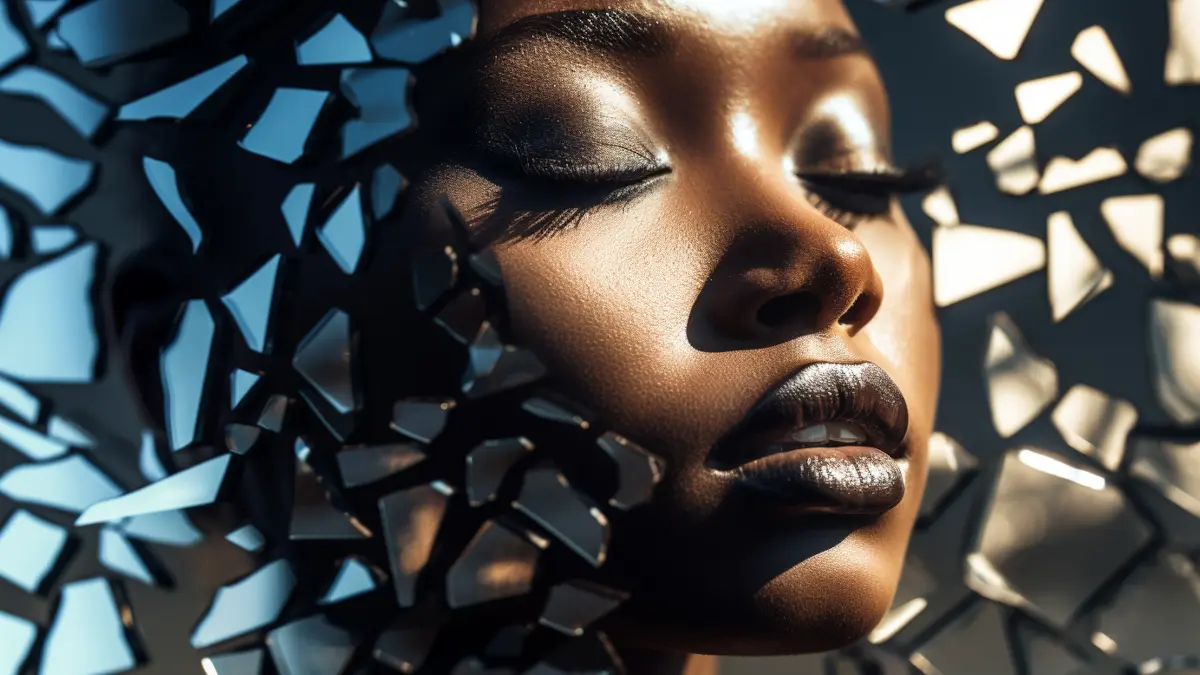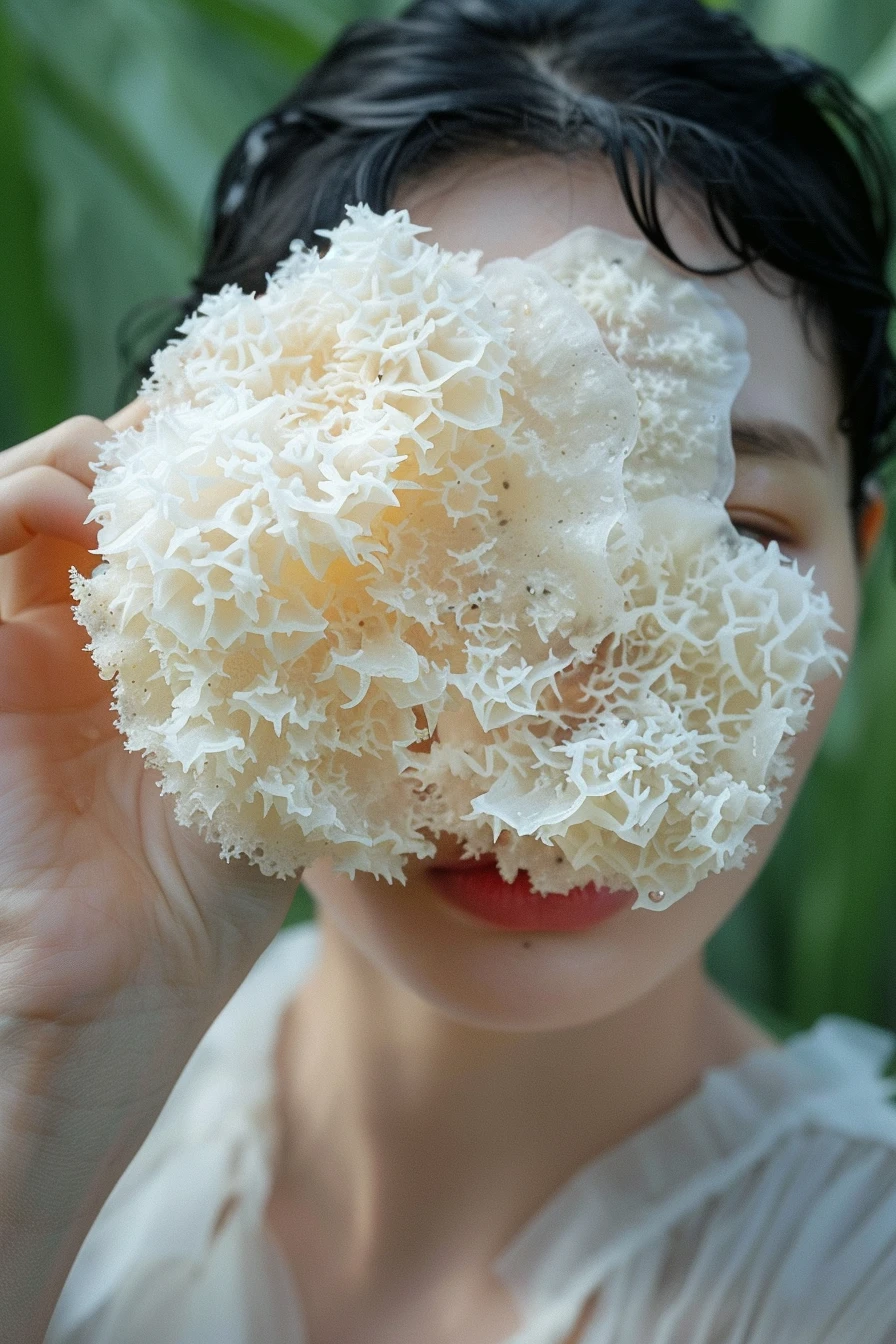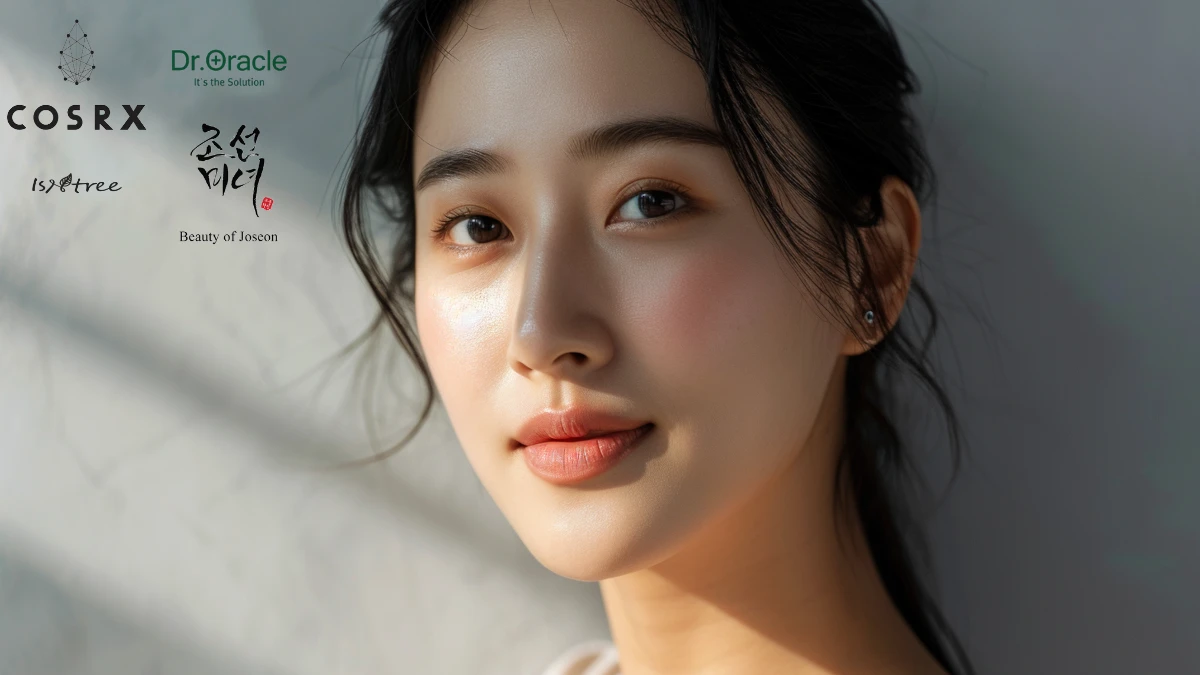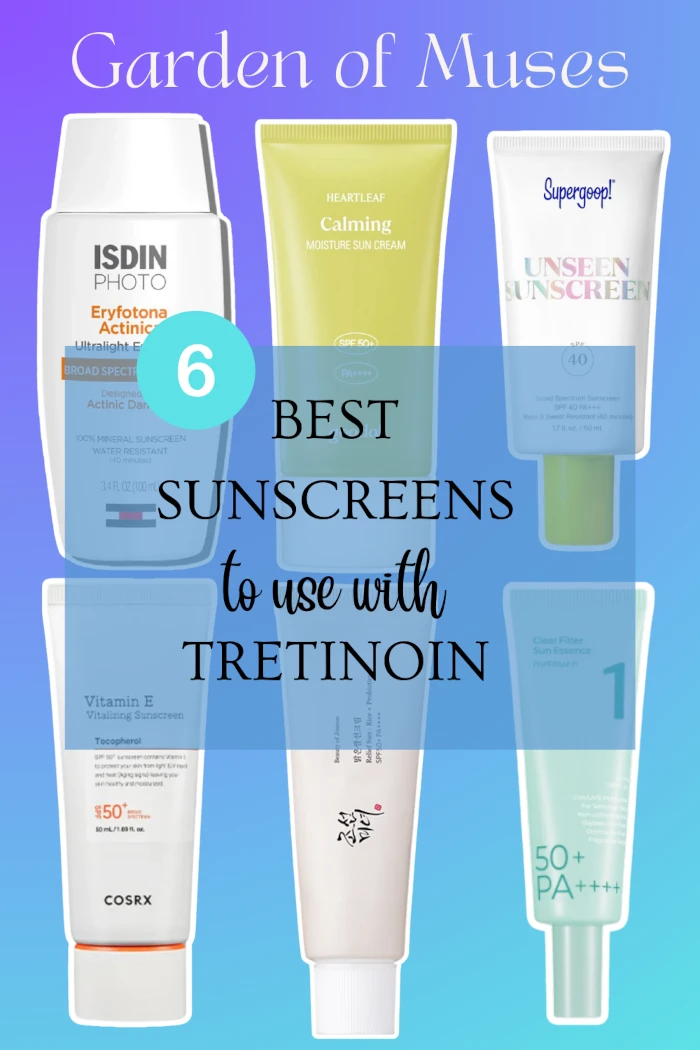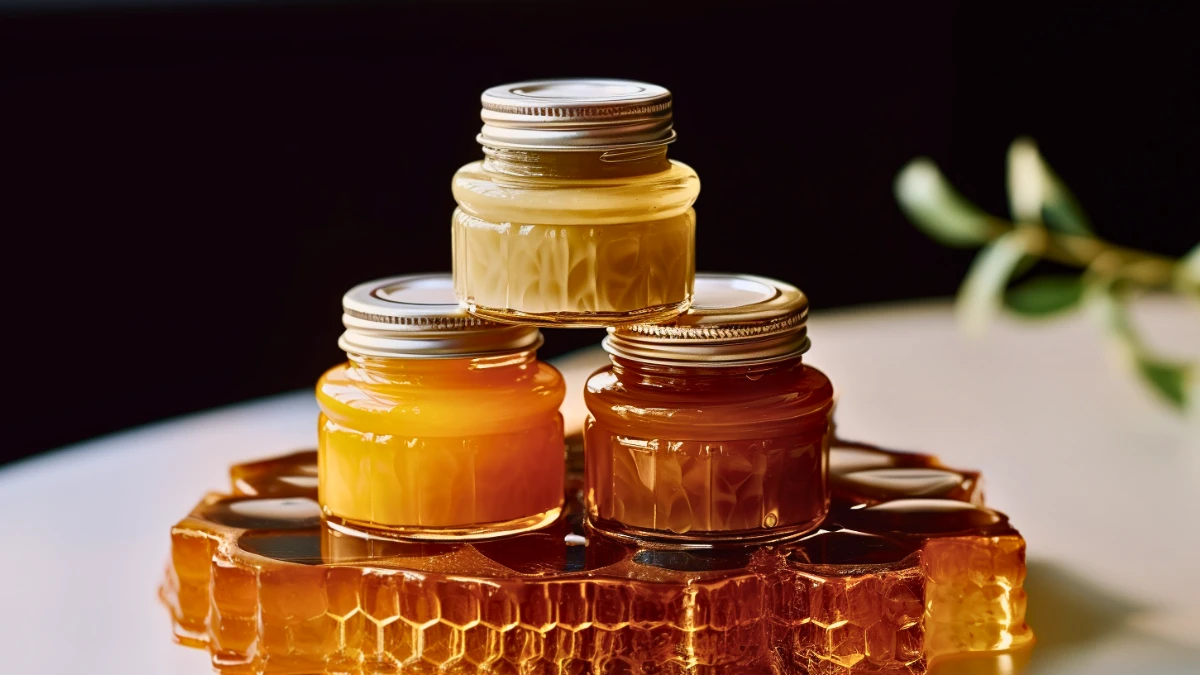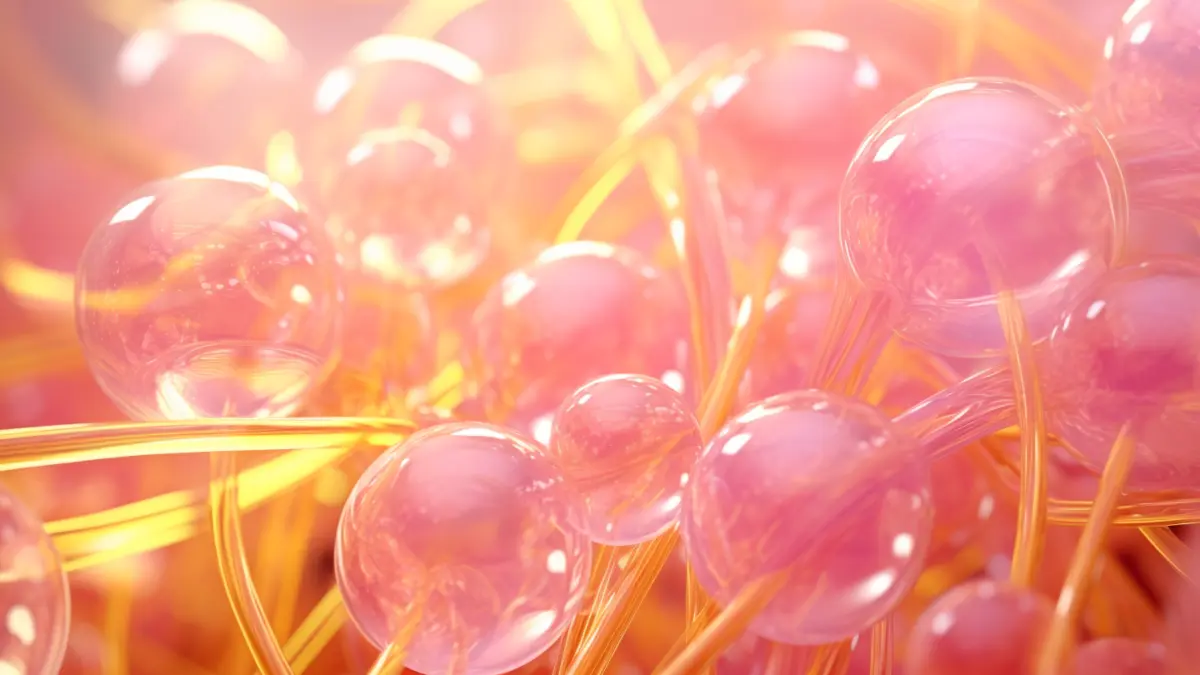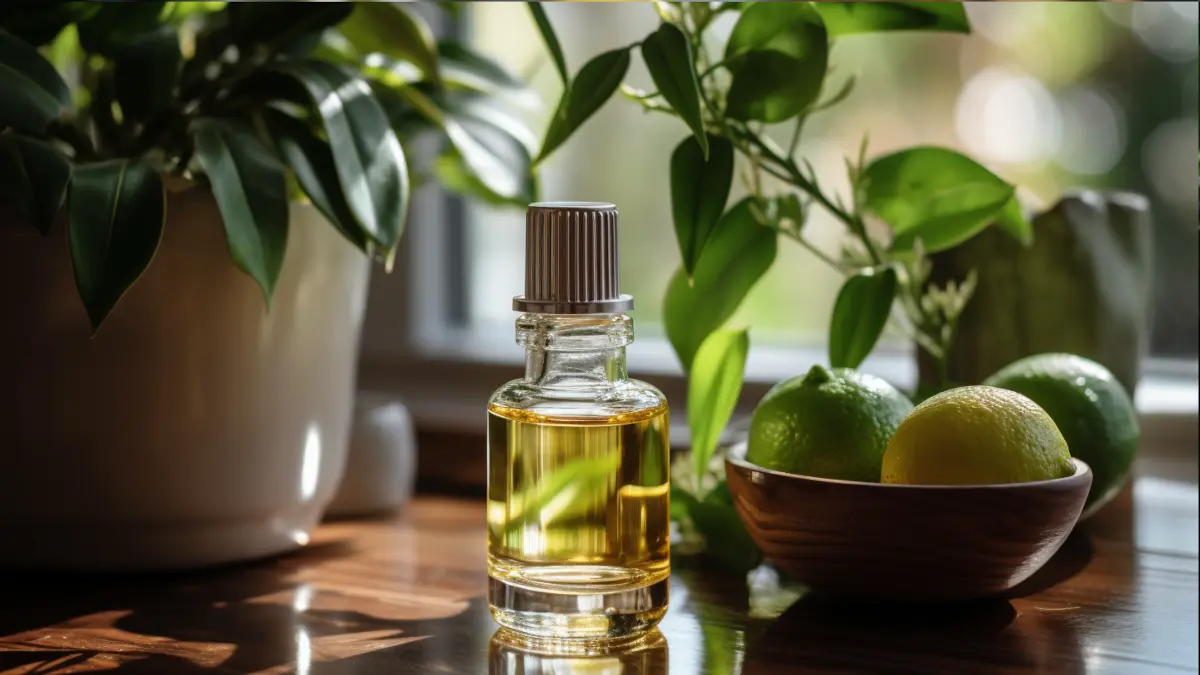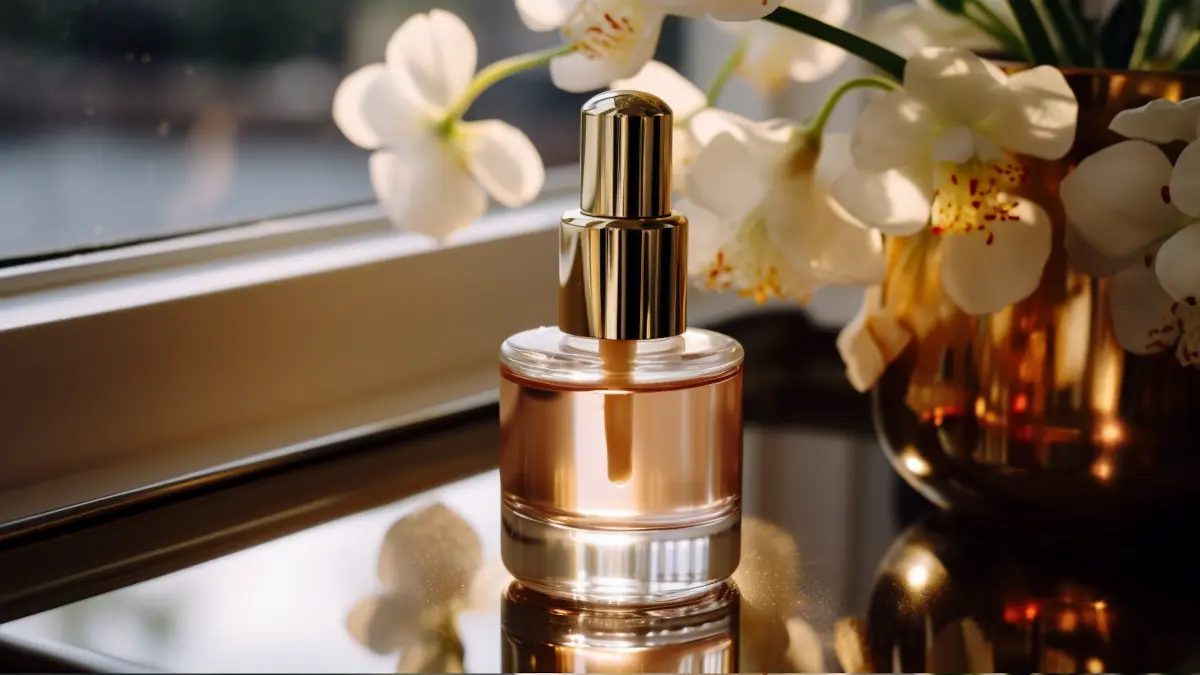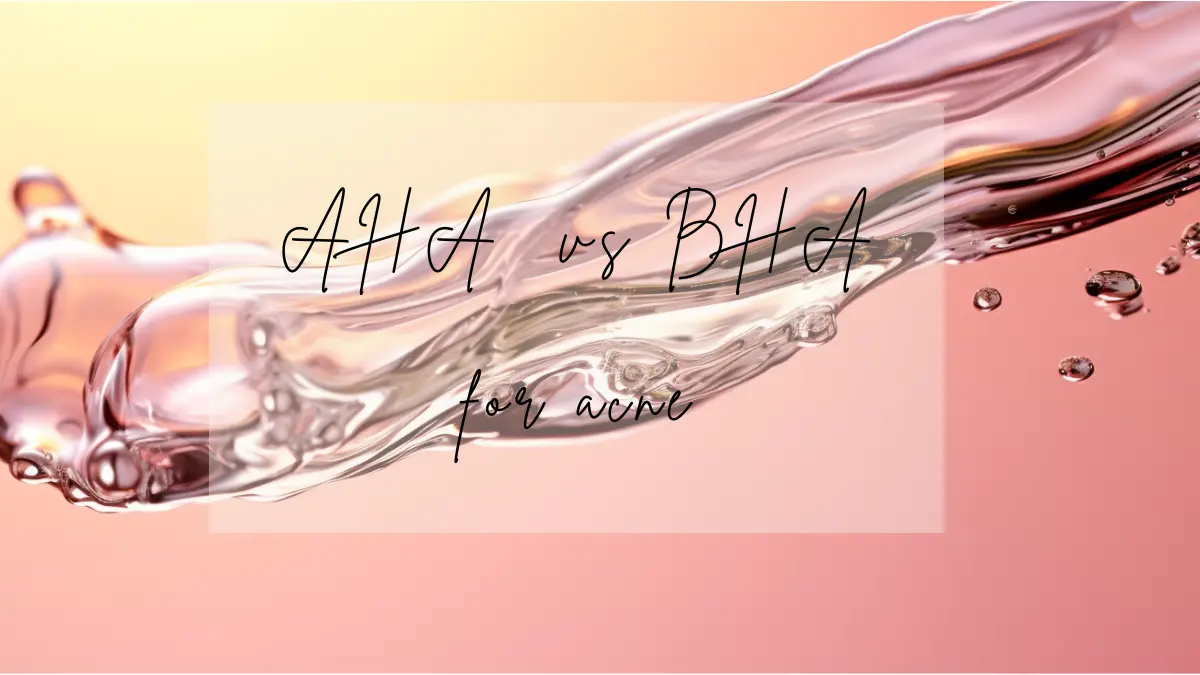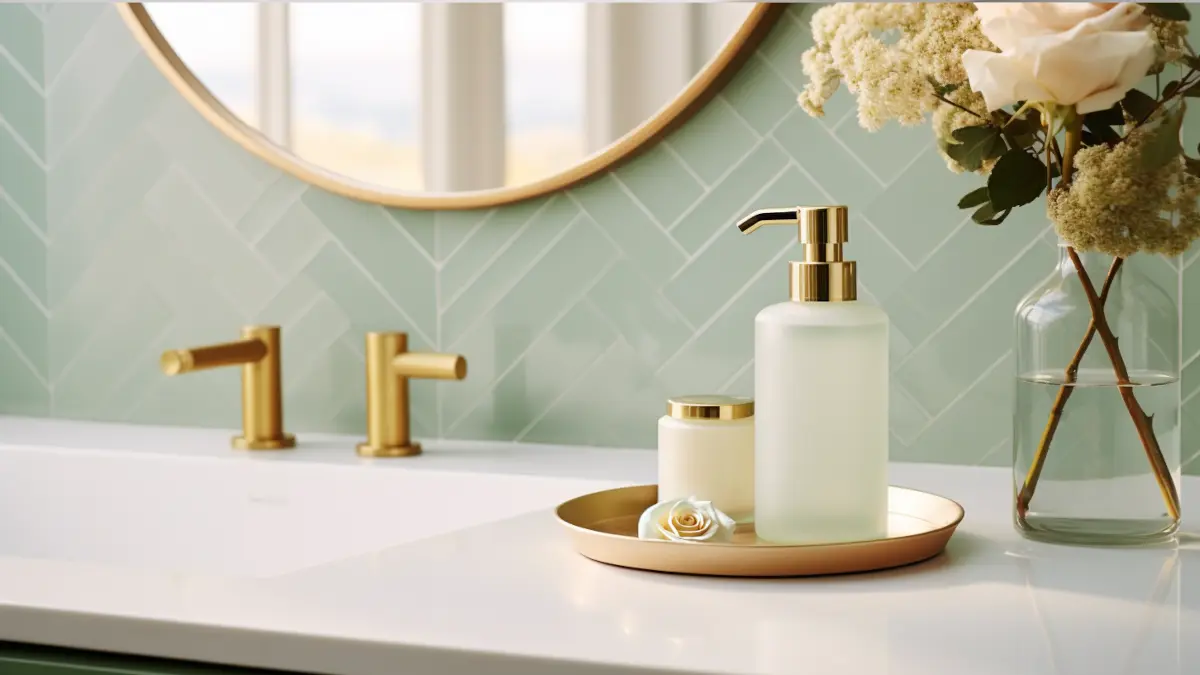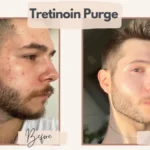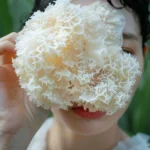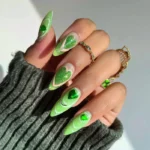Using tretinoin was always one of those things I thought I would do when I got “older.” I have read it is exploding in popularity online. Topical tretinoin has been the gold standard for anti-aging, anti-wrinkle, and anti-acne in skincare for decades. It’s prescribed for everything.
And guess what: I’m older. I’m only 37, of course, but every day of 37 is one step closer to 40, which is closer to 50. At my last dermatologist visit, she listened to me gripe about stubborn acne scars, hyperpigmentation, and teeny wrinkles no other person could see, and she asked, “Well, why aren’t you on tretinoin?” So now I am.
Unfortunately, tretinoin can cause purging, dryness, flaking, and increased sensitivity for the first few months of use. But if you stick with it, you could have your best skin ever. Here’s how to get through the woods.
[Editor’s note: Retinoids shouldn’t be used by those who are pregnant, considering getting pregnant, or nursing. Please consult with your doctor before use.]
Tretinoin Peeling, at a Glance:
What Is Tretinoin Peeling?
It’s been one year since then, and I use 0.05% every evening. The retinization phase is over for me, but if I experience some peeling, it’s always in winter and around my mouth.
Funny story: when I started using tretinoin, I primarily worked from home, but there have been times I went to the office, went to the bathroom, and noticed that my chin and nose were on the verge of flaking off. Thanks, tretinoin! I didn’t know that the skin would undergo retinization when introducing tretinoin.
But what is tretinoin peeling, and why does it happen?
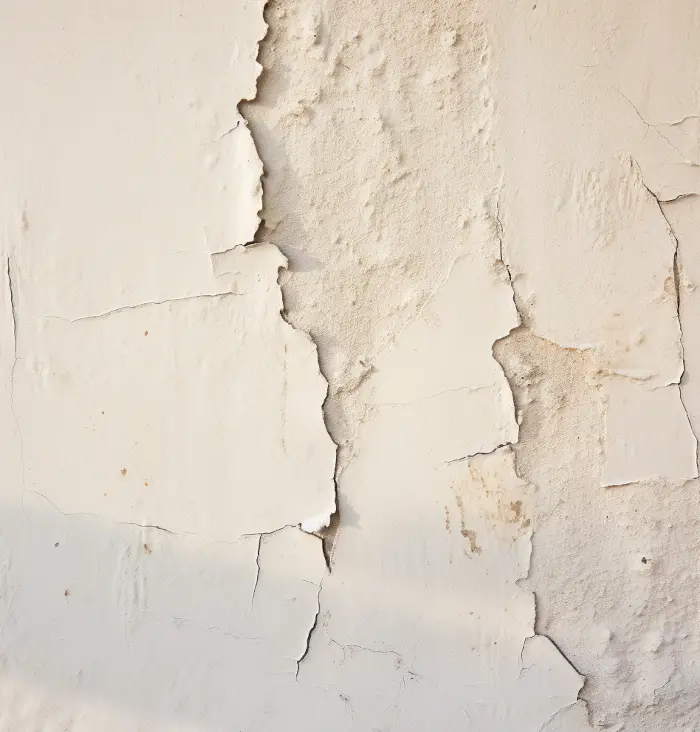
When starting using tretinoin, it is common for your skin to become slightly dry and flaky and for small amounts of skin to peel off your face. This usually happens within the first weeks or months of using tretinoin.
Our skin cells undergo a natural process of cell turnover, where old cells are replaced by new ones approximately every 30 days. Retinoic acid, found in tretinoin, binds to its receptor in the skin and speeds up the production of new skin cells, which causes the old ones to shed.
Also, tretinoin reduces sebum production. Without enough oil, it is hard for the skin to retain moisture. The peeling of the skin is due to transepidermal water loss, which occurs when the current skincare routine cannot prevent or minimize it.
This leads to the most superficial cells of the stratum corneum quickly lifting and losing contact with the rest of the dead cells that are usually kept together by the lipids of our natural moisturizer, the sebum, and our hydrating and moisturizing products.
Learn More about How Tretinoin Works
The Tretinoin Purge – How Long Does It Last?
6 Best Sunscreens to Use with Tretinoin in 2025
Tretinoin Peeling – OMG! Half My Face Is Flaking Off at the Office!
Tretinoin Skincare Routine – Designed for Absolutely No Irritation
In layperson’s terms, within a few weeks of using tretinoin, the skin beneath will get ready to meet the world quicker, so if you don’t hydrate and moisturize it religiously, you may have dry and flaky skin, aka tretinoin skin peeling. Once winter low temperatures and indoor dry air are added to the mix, peeling will likely occur.
Additionally, tretinoin increases your skin’s sensitivity to sunlight, making it more likely to get sunburned and peel off naturally after sun exposure.
Therefore, it is essential to wear sunscreen when you are using tretinoin.
Another common side effect during the adjustment period is the tretinoin purging, aka the retinol uglies.
How Do I Avoid Flaking and Peeling?
Avoid Increased Absorption of Tretinoin
You should let your skin dry completely after washing it and applying tretinoin. Wet skin increases absorption and flaking.
Waiting 10 to 30 minutes after washing will keep your skin from absorbing too much product. This should cut down on irritation.
Avoid Sensitive Areas
Have you wondered, why you’re more prone to peeling around the mouth?
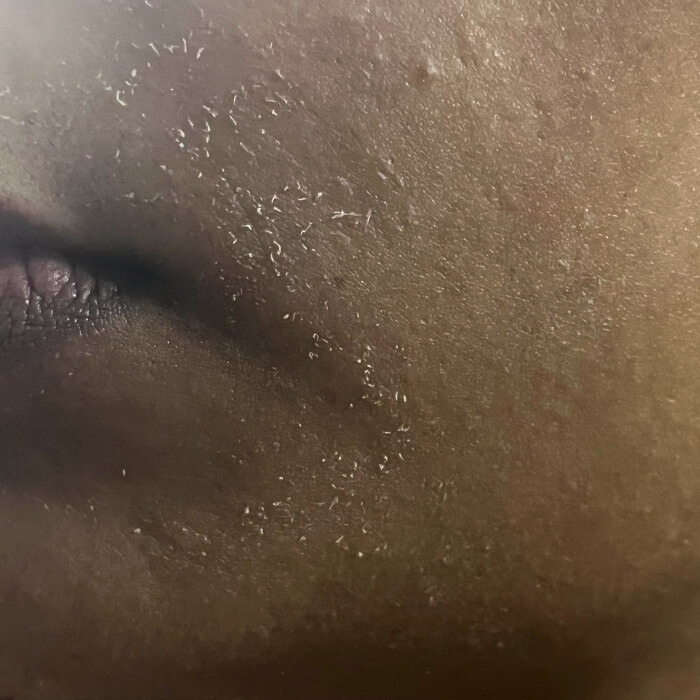
Tretinoin should not be applied around the eyes, mouth, nasal creases, and mucous membranes. These areas are more sensitive.
If your skin is peeling around your mouth, you can protect that gentle area with an occlusive such as Vaseline* before using tretinoin or moisturize with rosehip oil.
Take it Slowly
Please don’t rush into it; go slow. I’ve been on tretinoin for a while, but I still apply it only every other night. Skincare is a marathon, not a race.
You need the teeniest amount, too. A pea-size dab is fine.
Start with a lower percentage formulation: 0.025% or 0.04%. 0.05% is pretty high at first. 0.1% is very high. The Retin-A Micro Gel formulation is generally less irritating.
You might want to ease into your tretinoin application to prevent excess peeling and keep yourself from looking like a monster. You can play around with the frequency of application, maybe every other night or every third night, until your skin can tolerate it without too much irritation.
At first, please don’t use it nightly. Your skin needs time to get used to it, so don’t go crazy and slather it on each night. To build tolerance, apply once every two to three days in the beginning. Use the other nights to add plenty of hydration and moisturization.
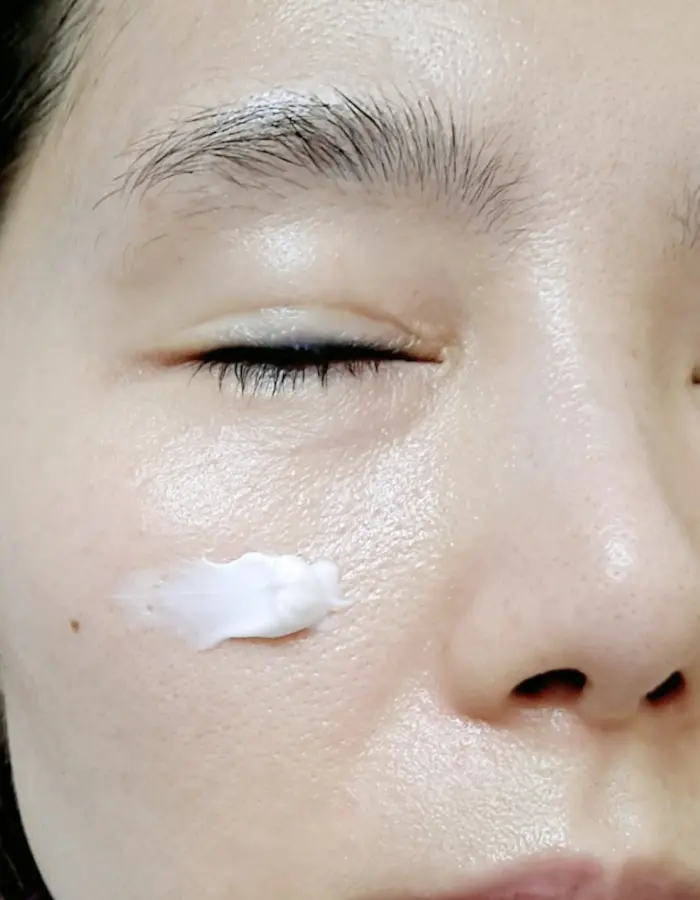
Buffer
There are several methods of applying tretinoin to reduce irritation.
Applying moisturizer before tretinoin is called “buffering.” It slightly dilutes tretinoin and can be ideal for a beginner to get through the retinization phase.
Applying moisturizer both before and after is called “sandwiching.” This is a good strategy during retinization or to avoid/deal with dryness and peeling.
Hydrate
A tretinoin routine works best when it combines hydrating, moisturizing, and occlusive. So many of you are struggling because you slap some moisturizer on a dehydrated face. It would be best if you had the hydration aspect as well.
Moisturize Intensly
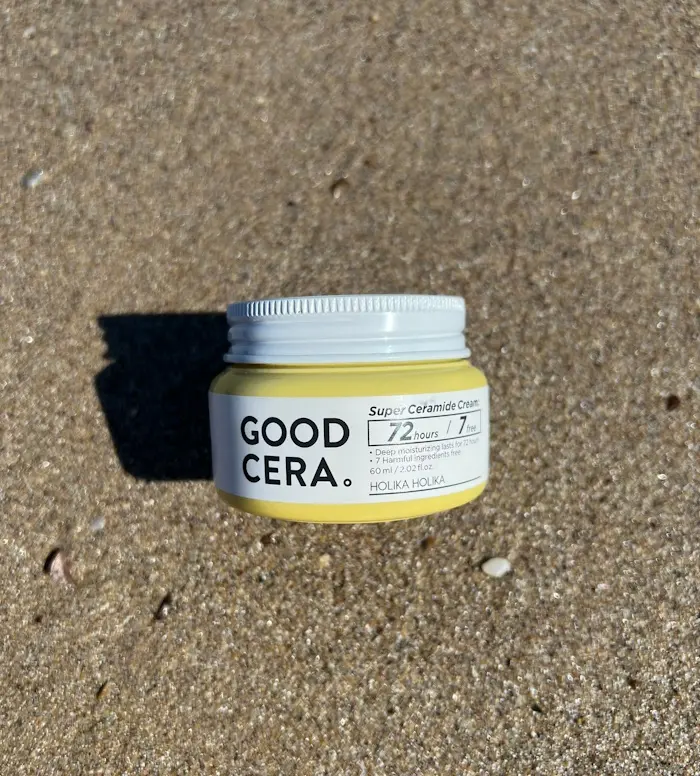
Using a good moisturizer is vital when your skin is flaky and peeling from adjusting to tretinoin.
I love Holika Holika Good Cera Super Ceramide Cream when my skin feels flaky and irritated.
This moisturizer has four types of ceramides and niacinamide. This is important, as studies prove that using a ceramide moisturizer improves tretinoin outcomes, especially when it contains niacinamide.
Also important is that it contains lots of oil that contains fatty acids, which form the intercellular lipid matrix, strengthening your skin barrier.
It also has Butylene Glycol, Glycerin, Aloe, and allantoin, which add hydration to the skin.
Slugging
Slugging is applying a thin layer of petroleum jelly over your entire face. It locks in the moisture from your routine, helping it soak in better and helping your skin to retain moisture.
Vaseline, Aquaphor, CeraVe Healing Ointment, or La Roche Posay Cicaplast Baume* are good examples that can be used on “off” nights to help prevent dryness. Gently pat on a skinny layer.
Don’t slug over tretinoin. In some cases, slugging over tretinoin can do more harm than good. It can cause an increase in irritation instead of alleviating it. Slugging over actives increases their absorption rate and can also increase irritation.
[sibwp_form id=1]
How to Treat Peeling Skin from Tretinoin
Remove Excess Skin
If you do get flaky, be careful with how you treat it. Mechanical exfoliation could damage your skin in its vulnerable state. Try gently washing your skin with your hands in the morning to slough off the flakes.
Don’t force the skin off because that may lead to increased irritation. Whatever you do, don’t pull on the skin flakes.
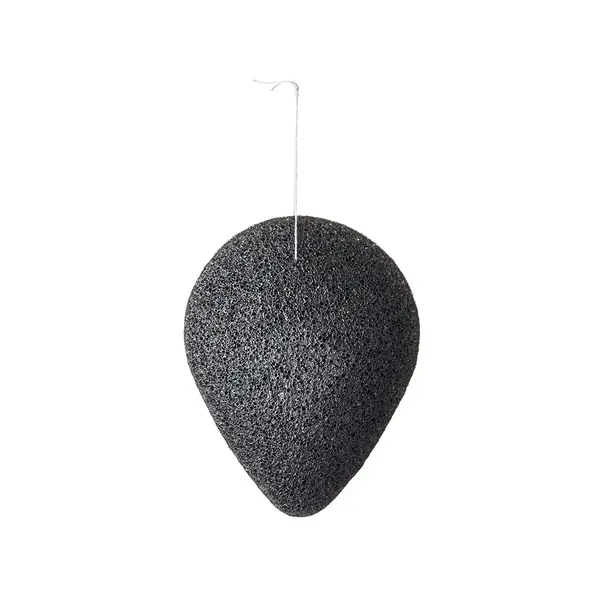
If the peeling is severe, take a gentle cloth or Konjac sponge* and lightly brush the skin when washing to help lift some of it.
Some good options are a Konjac sponge or a gentle exfoliating powder. I have this same one from Amazon*, and it’s my ride-or-die in emergency flaking situations. Use sparingly (I did a quick scrub once a week) and gently slough flakes away without irritating your sensitized skin.
Don’t do a full-on exfoliation if your skin isn’t fully adjusted to tretinoin. It could lead to damaging your skin’s moisture barrier.
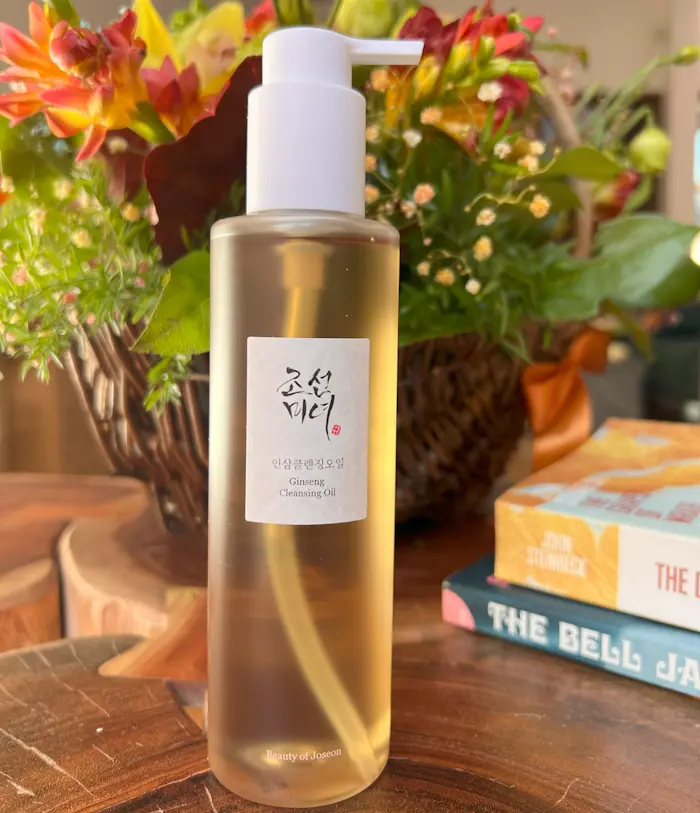
Another way to gently remove the excess skin is oil cleansing. Get an emulsifying oil cleanser that will wash off easily. I love the Beauty Of Joseon Ginseng Cleansing Oil. It is gentle and doesn’t further strip or dry the skin.
Hydrate Dry Tretinoin Skin
The best way to treat dry skin from tretinoin is to add layer after layer of hydration. Layer them from thinnest to thickest – this is the moment to go wild with your hydrating products.
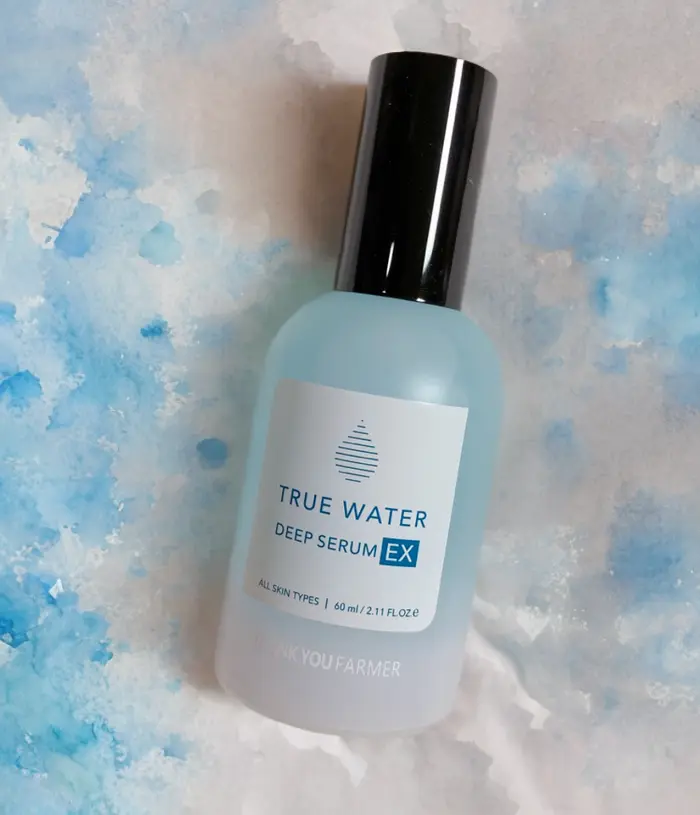
Thank You Farmer True Water Deep Serum EX is a highly hydrating serum with an exciting composition. It feels like snail mucin stretching on the skin, even though it does not contain snail mucin.
When applied to the skin, it becomes watery and brings hydration, which also helps lock onto the face well. This serum absorbs well into the skin, making it suitable for those who don’t like greasy serums or don’t want them to leave a sticky feeling on the skin. Please read Adela’s Thank You Farmer True Water Deep Serum EX review.
Follow up with a moisturizer and sunscreen to protect your skin.
Avoid Makeup
Makeup can increase your flakes’ appearance. A hydrating tinted sunscreen would be much more advisable.
Should I Keep Using Tretinoin If My Face Is Peeling?
It’s crucial to remember that tretinoin skin peeling is an average effect of tretinoin and is not very concerning. It is not a reason to quit tretinoin. If it becomes too much, follow the steps described above.
Lastly, before concluding that tretinoin is not suitable for you, you should:
- Consult with your doctor or provider first.
- Consider skipping a night of tretinoin if you have lots of flaking.
- Switch formulations. Some people experience breakouts triggered by a particular formulation. If you’re still breaking out after 4-6 months, consider switching types (gel → cream, cream → gel).
- Is your routine too irritating? Cut out ALL other actives and focus on hydration.
- Are you using it too infrequently? If so, the skin must undergo the retinization process each time. That inherently involves some irritation. If you go too slow, your skin may never acclimate. Try increasing your frequency to at least four times a week.
- Hydrate. Hydrate. Hydrate.
- Moisturize. Moisturize. Moisturize.
How Long Does Tretinoin Peeling Last?
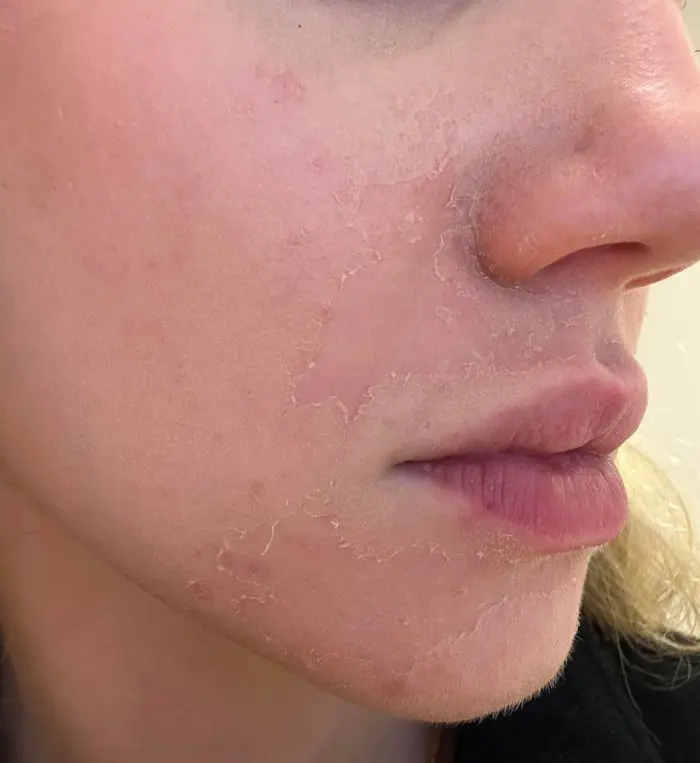
Typically, skin peeling stops after two to six weeks of treatment as your body replaces the old skin with new, fresh skin cells and your skin acclimates.
Peeling from tretinoin won’t last forever. Peeling will subside once your skin has adjusted and you regularly use tretinoin. Instead, you should see the smoother, more plump, hydrated, and glowing skin you’ve been looking for. So, if you can, work through those initial side effects!
No Peeling with Tretinoin?
Another thing to mention is that not everyone experiences these effects. People who started tretinoin weeks or months ago and have not experienced peeling or redness may wonder if tretinoin is even working.
I haven’t, but I did start very slowly. Not experiencing those signs isn’t an indication that the retinoid product is not working for you. So, don’t be tempted to use it more often or use a larger amount! Your skin probably won’t thank you for it!
Peeling, redness, and irritation are undesirable side effects during retinization, but they are neither signs of efficacy nor predictors of long-term results. Every skin is unique, and if you can use tretinoin without any side effects from the beginning, consider yourself lucky.
Also, there is no relationship between the degrees of efficacy and the degree of irritation [7].
Don’t worry if you are not getting irritation from tretinoin at the start of treatment; it doesn’t mean it’s not working.
Example Tretinoin Routine
This simple routine may be used in the beginning to avoid skin flaking on tretinoin:
AM
- Pyunkang Yul Low PH Pore Deep Cleansing Foam (optional)
- Round Lab Mugwort Calming Toner
- Holika Holika Good Cera Super Ceramide Cream
- Lanolips lip balm*
- Cosrx Vitamin E Vitalizing Sunscreen
PM
- Beauty Of Joseon Ginseng Cleansing Oil
- Pyunkang Yul Low PH Pore Deep Cleansing Foam
- Round Lab Mugwort Calming Toner
- Benton Aloe Propolis Soothing Gel
- Tretinoin
- Holika Holika Good Cera Super Ceramide Cream
- Lanolips lip balm*
(*affiliate links)
Final Thoughts
Stick it out, and you’ll have #glowingskin in no time.
As always, you do you; be kind to your skin and yourself!
Remember that every person’s skin and skin type is different, so what might work for me might not work for you, and vice versa.
So, before adding a new product to your skincare routine, it pays to do a little research first. Pay special attention to ingredients that you might react to.
Doing a patch test is always a good idea. Unsure? Best to consult your dermatologist. Happy skin experimenting, and don’t forget the sunscreen!
Show Me Proof
- Baldwin, Hilary E., Marge Nighland, Clare Kendall, David A. Mays, Rachel Grossman, and Joan Newburger. “40 years of topical tretinoin use in review.” Journal of drugs in dermatology: JDD 12, no. 6 (2013): 638-642.
- Schorr, Ethlynn S., Farzi Sidou, and Nabil Kerrouche. “Adjunctive use of a facial moisturizer SPF 30 containing ceramide precursor improves tolerability of topical tretinoin 0.05%: a randomized, investigator-blinded, split-face study.” Journal of Drugs in Dermatology: JDD 11, no. 9 (2012): 1104-1107.
- Tanghetti, Emil, Zoe Draelos, Pearl Grimes, Sunil Dhawan, Michael Gold, Leon Kircik, Lawrence Green, Angela Moore, and Fran Cook-Bolden. “Moisturizer use enhances facial tolerability of tazarotene 0.1% cream without compromising efficacy in patients with acne vulgaris.” In Poster presented at 32nd Annual Hawaii Dermatology Seminar. 2008.
- Del Rosso, James Q. “The role of skin care as an integral component in the management of acne vulgaris: part 1: the importance of cleanser and moisturizer ingredients, design, and product selection.” The Journal of clinical and aesthetic dermatology 6, no. 12 (2013): 19.
- Del Rosso, James Q., and Staci Brandt. “The role of skin care as an integral component in the management of acne vulgaris: part 2: tolerability and performance of a designated skin care regimen using a foam wash and moisturizer SPF 30 in patients with acne vulgaris undergoing active treatment.” The Journal of Clinical and Aesthetic Dermatology 6, no. 12 (2013): 28.
- [5]Schorr ES1, Sidou F, Kerrouche N. (2012) Adjunctive use of a facial moisturizer SPF 30 containing ceramide precursor improves tolerability of topical tretinoin 0.05%: a randomized, investigator-blinded, split-face study. Journal of Drugs in Dermatology : JDD, 01 Sep 2012, 11(9):1104-1107
https://europepmc.org/article/med/23135655 - [6] Draelos, Zoe Diana (2008) Clinical Situations Conducive to Proactive Skin Health and Anti-Aging Improvement. Journal of Investigative Dermatology Symposium Proceedings. Vol. 13. No. 1. Elsevier, 2008.
https://www.sciencedirect.com/science/article/pii/S0022202X15526675 - [7] Griffiths CEM, Kang S, Ellis CN, et al. Two Concentrations of Topical Tretinoin (Retinoic Acid) Cause Similar Improvement of Photoaging but Different Degrees of Irritation: A Double-blind, Vehicle-Controlled Comparison of 0.1% and 0.025% Tretinoin Creams. Arch Dermatol. 1995;131(9):1037–1044. doi:10.1001/archderm.1995.01690210067011
